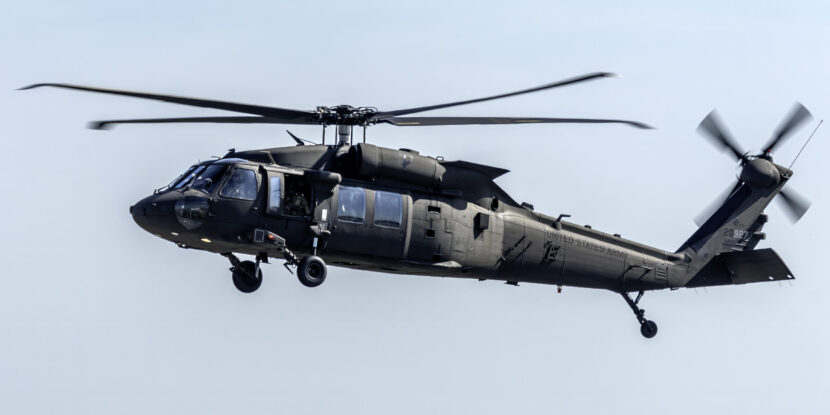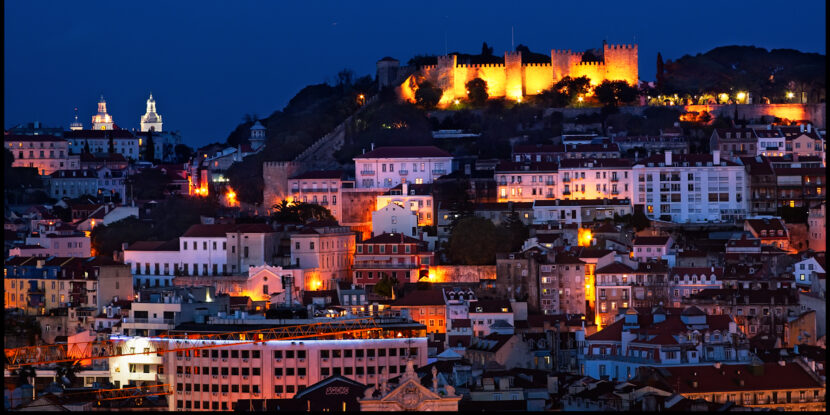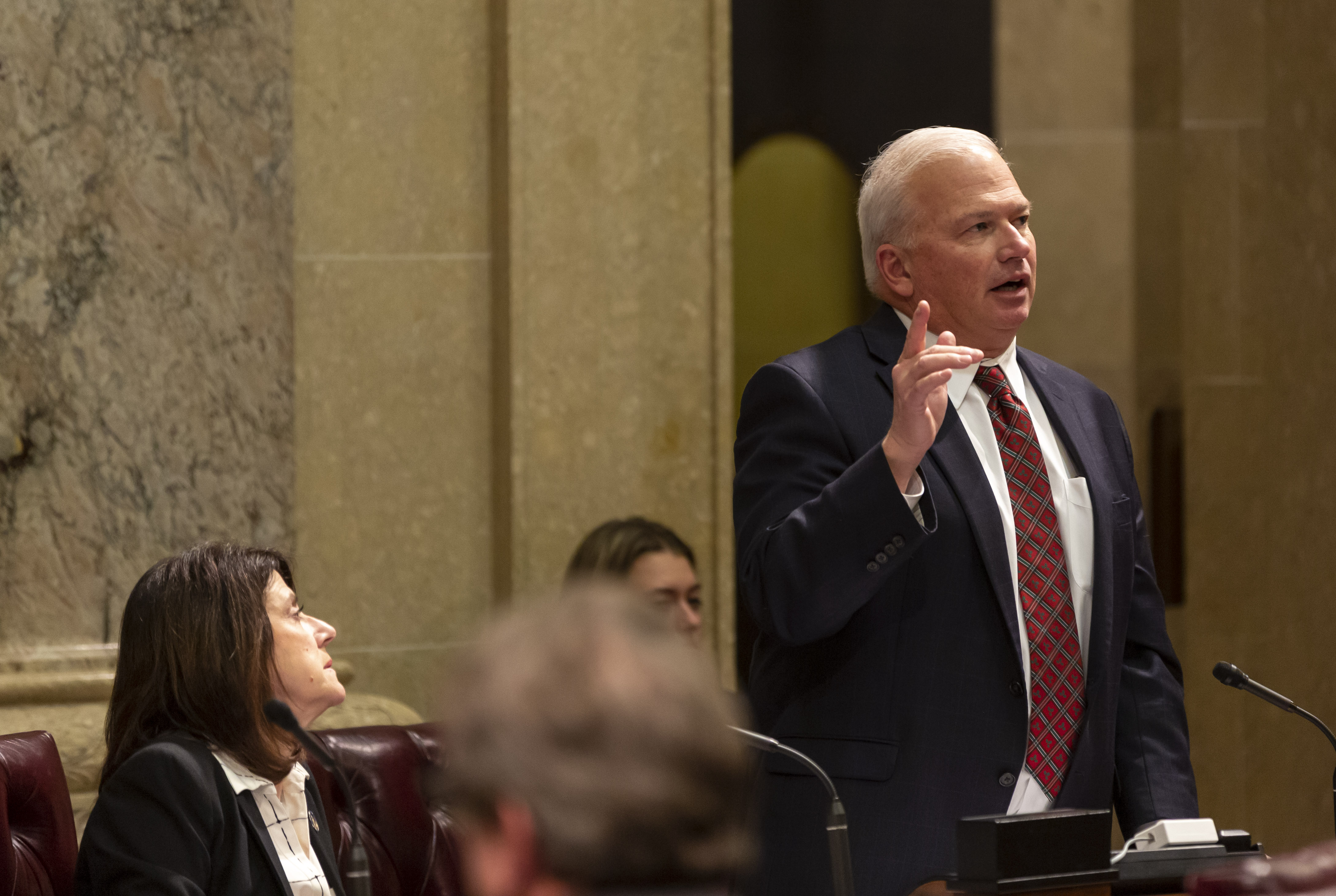
Shocking new details reveal that Army Black Hawk pilot Capt. Rebecca M. Lobach repeatedly disregarded instructions in the minutes leading up to the tragic collision with a commercial airliner, which resulted in the deaths of all passengers.
Refresher: On January 29, 2025, an Army Black Hawk helicopter collided midair with American Airlines Flight 5342 over Washington, D.C., killing all 67 aboard.
Your free, daily feed from The National Pulse.
Rank: While Lobach was the highest-ranking soldier on the flight, her instructor, Chief Warrant Officer 2 Andrew Loyd Eaves, had twice as many flight hours. (This will be important below.)
The new details: A New York Times investigation—based on government documents, cockpit recordings, and interviews with over 50 aviation experts and officials—uncovered a fuller picture of the crash. The following are direct excerpts from the Times article:
- First elevation instruction: “Warrant Officer Eaves stated that it was at 300 feet and descending to 200 feet—necessary because the maximum height for its route closer to the airport had dropped to 200 feet.”
- Second elevation instruction: “But even as it reached that juncture, Warrant Officer Eaves evidently felt obligated to repeat his instruction: The Black Hawk was at 300 feet, he said, and needed to descend. Captain Lobach said she would. But two and a half minutes later, the Black Hawk still was above 200 feet—a dangerously high level.”
- Left turn instruction: “The Black Hawk was 15 seconds away from crossing paths with the jet. Warrant Officer Eaves then turned his attention to Captain Lobach. He told her he believed that air traffic control wanted them to turn left, toward the east river bank. Turning left would have opened up more space between the helicopter and Flight 5342, which was heading for Runway 33 at an altitude of roughly 300 feet. She did not turn left.”
The mission: The Times report also confirmed the purpose of the Black Hawk flight that evening was to evaluate Capt. Lobach in a simulated emergency evacuation scenario.
Perspective: The collision was the deadliest U.S. air disaster since 2001.
Big picture: There is no public information to indicate that Captain Lobach was admitted into the Army due to relaxed DEI standards. However, Defense Secretary Pete Hegseth has ordered the military to end separate fitness standards for men and women—which includes tests of reaction time.

PULSE POINTS:
❓What Happened: A significant power outage affected Spain, Portugal, Andorra, and parts of France, disrupting services like subways, phone networks, traffic signals, and ATMs.
👥 Who’s Involved: The outage involved Spanish generator Red Eléctrica, Portuguese distributor E-Redes, and impacted over 50 million people in Spain and Portugal alone.
Your free, daily feed from The National Pulse.
📍 Where & When: The incident occurred on Monday across the Iberian Peninsula, including major cities like Madrid and Lisbon.
💬 Key Quote: Senior Portuguese cabinet minister Leitão Amaro noted, “It looks like it was a problem with the distribution network, apparently in Spain. It’s still being ascertained.”
⚠️ Impact: The outage affected transportation systems, halted court activities, and disrupted electronic transactions in both countries. Some areas of France and the microstate of Andorra, between Spain and France, also experienced disruptions.
IN FULL:
A widespread power outage hit Spain, Portugal, Andorra, and parts of France on Monday. The disruption led to issues in public transport, phone and Internet services, and basic utilities such as traffic lights and ATMs.
Spanish electricity operator, Red Eléctrica, reported significant effects throughout the Iberian Peninsula, which has a combined population surpassing 50 million. Details on the exact number of people impacted remain unclear, but several regions in Spain, including the parliament building in Madrid and numerous subway stations, were left without power just after midday. A chart from Spain’s electricity network indicated a significant drop in electricity demand around 12:15 PM, plunging from 27,500MW to about 15,000MW.
In Portugal, similar scenarios unfolded in the capital, Lisbon, as well as in northern and southern areas. The Portuguese government, represented by Cabinet Minister Leitão Amaro, indicated that the disturbances likely originated from issues with the distribution network in Spain. However, the exact cause of the outages was unconfirmed as of the time of publication.
Local distributor E-Redes described the problem as stemming from the European electricity system, which had to strategically cut power to stabilize the grid. Disconnects were also reported in certain areas of France. Some reports indicate a fire on south-western France’s Alaric Mountain, which damaged a high-voltage power line, may also have played a role.
Transportation in the Portuguese capital of Lisbon was severely affected, with subway cars evacuated. Legal proceedings came to a halt, and electronic payment systems, including ATMs, were rendered inoperative, further complicating daily life. Communication was interrupted, preventing mobile phone calls, although some apps remained functional.
Efforts were made to restore service, with France reportedly overcoming its outages and Spain reporting partial recovery of power supply in the country’s north and south several hours after the blackout began.
The incident highlighted the vulnerabilities in cross-border energy dependencies within Europe, where energy security has deteriorated as a result of an ongoing sanctions war with Russia and net-zero policies shutting down many traditional power plants.
show less

 2 months ago
4
2 months ago
4








 English (US) ·
English (US) ·